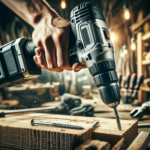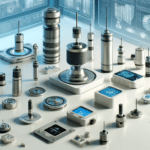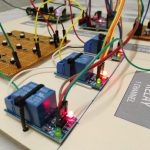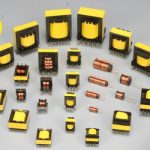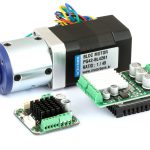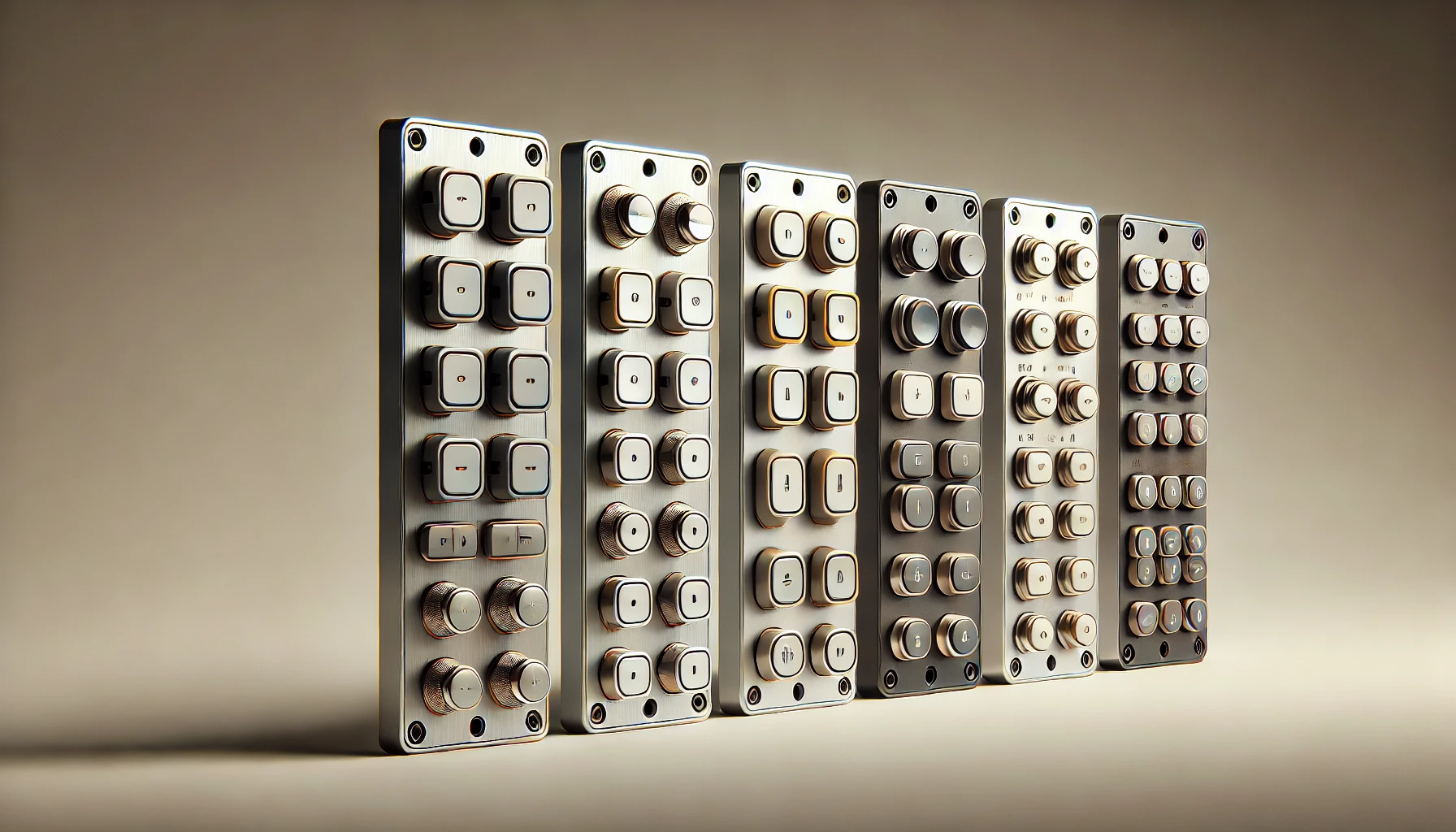
Introduction
Keypad switches, found beneath the button or keys, are integral to the functionality and user experience of countless electronic devices. Understanding what keypad switches are and their significance enables users to make well-informed decisions and choices when choosing components for their projects or products. This article provides the details of keypad switches, exploring their types, working principle, significance, and applications across numerous fields.
What are Keypad Switches? A Brief Introduction
They are also called key switches, are a type of electrical switch designed to input data or commands into a device. These switches are typically arranged in a matrix or grid pattern, forming a keypad. Each switch corresponds to a specific function or character, providing a user-friendly interface for inputting data or controlling functions. The switches’ buttons are typically marked with a number, letter, or symbol to facilitate easy data entry or command execution. Moreover, they are commonly used in a myriad of devices like calculators, phones, security systems, and industrial control panels.
How Do Keypad Switches Work?
Keypad switches are hardware components that operate by completing an electrical circuit when a key is pressed. They typically consist of several layers, including a printed circuit layer, a spacer, and a graphic overlay. When a user presses a key on the overlay, it forces the printed circuit layer to make contact, thus closing the circuit and registering the key press. The simplicity of this design makes keypad switches reliable and long-lasting, even in demanding environments.
The Significance of Keypad Switches in Modern Devices
The importance of keypad switches cannot be overstated, as they are central to the usability and functionality of many modern gadgets and equipment. They provide a reliable and straightforward interface for user input while capable of withstanding numerous presses. However, their tactile feedback helps users confirm their inputs, enhancing operational accuracy in various environments. While keypad switches may seem simple, they enable user input and contribute to the overall device’s functionality and user experience.
Popular Keypad Switch Types Available on the Market
Keypad switches come in various types, each designed for specific uses and offering different tactile experiences, durability, and responsiveness. The main types of keypad switches include:
Mechanical Keypad Switches
Mechanical switches use a physical mechanism involving a spring and a metal contact to register keypresses. They are known for their distinct tactile feedback and longevity. They are highly valued in environments where precision and durability are critical, such as gaming and professional typing.
Membrane Keypad Switches
Membrane switches are quiet and cost-effective switches that consist of a flexible membrane layer that, when pressed, makes contact with a conductive circuit below. A membrane keypad switch is commonly found in everyday household devices like microwaves and remote controls.
Capacitive Keypad Switches
Capacitive switches operate using the principle of capacitance, detecting changes in electrical charge when a key is pressed. These switches are incredibly responsive and are often used in devices requiring a fast and light touch, such as touchscreens and some high-end keyboards.
Rubber Dome Keypad Switches
Rubber dome switches combine aspects of both mechanical and membrane switches. They use a rubber dome to provide tactile feedback, and when pressed, the dome collapses, completing the circuit. These switches are common in many standard keyboards due to their relatively low cost and satisfactory performance.
Applications of Keypad Switches: Exploring Their Versatility
Keypad switches, with their compact size and versatile functionality, have found widespread application across various industries and devices, such as:
Consumer Electronics
- Calculators: Keypad switches are the primary input method for calculators, allowing users to enter numbers and perform calculations.
- Remote Controls: Many remote controls use these electrical switches to navigate menus, select channels, and control volume.
- Digital Door Locks: Keypad switches provide a convenient and secure way to enter access codes for digital door locks.
- Gaming Consoles: Some gaming consoles incorporate bespoke switches for specific functions, such as entering cheat codes or navigating menus.
Industrial Applications
- Point-of-Sale (POS) Systems: Keypad electrical switches are essential components in POS terminals, enabling cashiers to enter product codes, quantities, and payment information.
- Industrial Control Panels: They are used in industrial control panels for operators to input commands, monitor processes, and adjust settings.
- Scientific Instruments: A keypad switch is an integral component found in various scientific instruments, such as laboratory equipment and medical devices, for data entry and control.
Automotive Industry
- Car Radios: Key switches are used in car radios for selecting stations, adjusting volume, and controlling other functions.
- Navigation Systems: They are ideal for entering destinations and navigating through menus on car navigation systems.
- Climate Control Systems: Key switches allow drivers convenient adjustability options for temperature, fan speed, and other settings in car climate control systems.
Other Applications
- Vending Machines: Keypad switches are used in vending machines to help customers select products and enter payment.
- Security Systems: These hardware components are employed in security systems to enter disarm codes and activate alarms.
- Elevators: Key switches are integral in elevators for selecting floors and controlling other functions.
Final Thoughts
Keypad switches are a vital component in many electronic systems, facilitating user interaction with machines straightforwardly and effectively. From security systems to household appliances, these small but crucial devices allow for easy input of data. Understanding the different types of keypad switches, how they work, their significance and the versatile applications outlined in the article will help you choose the right switch for your needs.







